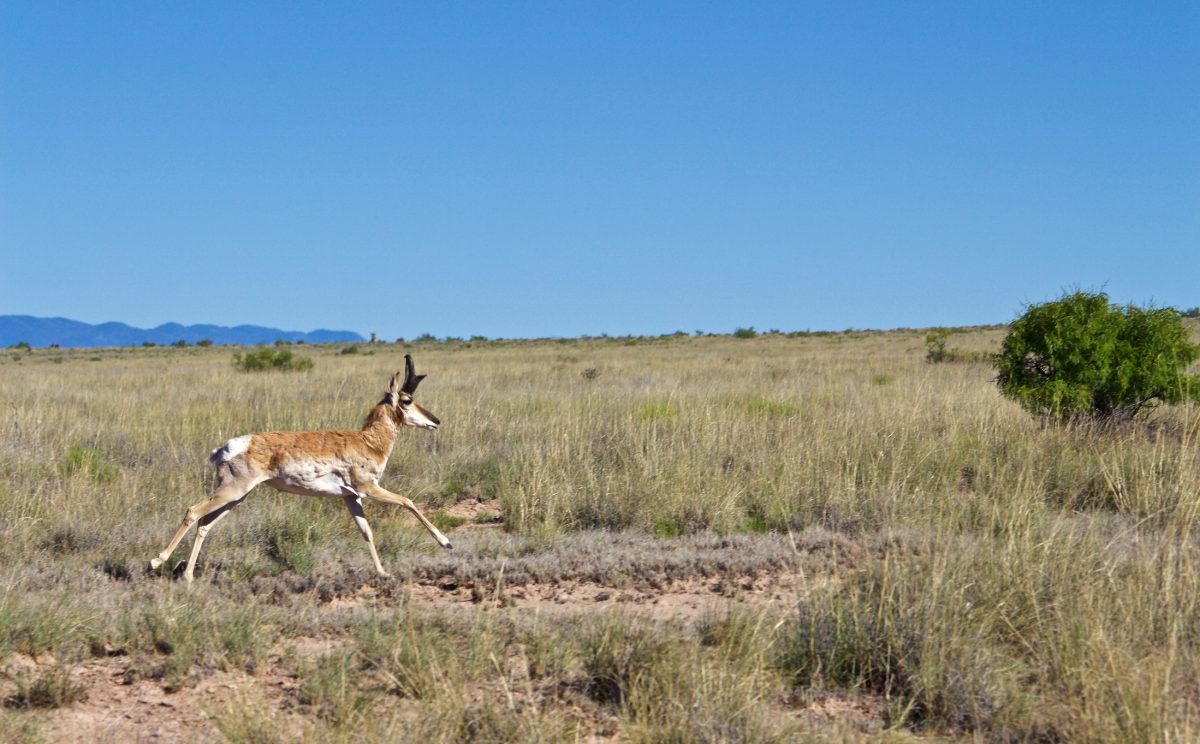Evolution of Speed: How Has the Clever Pronghorn Outlived The American Cheetah?
Posted on Categories Discover Magazine

The American pronghorn is a hoofed mammal native to North America. It’s not an antelope, and it’s not a sheep, although it has traditionally been called both.
Rather, the pronghorn is an even-toed ungulate that can run faster than most any animal on Earth, with the exception of the African cheetah. Clocking in at 61 miles per hour, the pronghorn can run faster than any predator that lives in its habitat, and it has extreme endurance, keeping up that pace for long periods of time.
So it begs to question: Why is the pronghorn so fast that no animal around it can catch up?
The Pronghorn During the Pleistocene
According to Kerey Barnowe-Meyer, a wildlife biologist with the Nez Perce Tribe in Lapwai, Idaho, pronghorn used to be flanked by many more predators that could bring them down. During the Pleistocene epoch (about 2.5 million to 13,000 years ago), North America would have been a fierce place to call home.
The pronghorn would have overlapped with many predators in its temperate and arid grassland habitat. The animal kingdom would have included species like the American cheetah, the North American lion, cougars, hyenas, dire wolves, saber-toothed cats and jaguars. “There would have been a very diverse predator community,” says Barnowe-Meyer.
Read More: Everything to Know About Saber-Toothed Cats and their Extinction
Pronghorns and Cheetahs
Barnowe-Meyer says there would have been evolutionary pressure on the pronghorn because any number of these species could take them down. Still, the attention has focused on the American cheetah because they were adapted to high-speed pursuit similar to modern-day cheetahs.
We also know that like the African cheetah, the American cheetah was fast and may have reached speeds of 65 mph, though, unlike the pronghorn, they didn’t have the endurance to keep running at these speeds for long, says Francisco de Borja Figueirido Castillo, a paleontologist at the University of Malaga, in Málaga, Spain.
Figueirido says that the species may also have been closely related to the mountain lion that we see in North America today, its body bulkier rather than the streamlined version from Africa. We can’t know its exact velocity because, while the morphology of the bones shows it was fast, we weren’t actually there to clock its speed.
(Credit: University of Malaga) The paleontologists analyzed through 3D technology if the brain architecture of Miracinonyx was similar to that of cheetahs. The results evidenced clear differences between them.
But Figueirido’s recent research, published in the October 2022 issue of the journal Biology Letters, showed that the morphology of the elbow from an American cheetah specimen points to a few clues about its speed. “From its elbow, we can see that it was a pursuit predator (which means it was faster) rather than an ambush predator like, for example, a North American lion,” he says.
The American cheetah went extinct around 12,000 years ago at the end of the Pleistocene, along with many of the other predators that lived alongside the pronghorn, likely due to climatic changes and a loss of prey density.
Read More: 5 Ancient Animals That Stood The Test Of Time
Predation and Pronghorn Speed
Even without many predation pressures of the past, pronghorns still retain the evolutionary qualities that helped them survive millions of years ago. “It’s an animal that has been specialized to deal with a problem that no longer exists,” says Barnowe-Meyer.
But there are still a number of factors that keep the species in check and control the population. There are and have always been predators that kill pronghorn fawns. Today coyotes, and wolves are its main predators. Though the fawns learn to run quickly, there is a period of time at the beginning of their lives when they’re very vulnerable to predators.
“Habitat quality, nutrition, severe winter weather and road death also control the pronghorn population today,” says Barnowe-Meyer. And just because one pronghorn can run fast, that doesn’t mean they can all hit speeds of 61 mph. Many are injured, have nutritional limitations and others just don’t make the cut.
The pronghorn is one of the fastest animals ever, which has helped it to survive and thrive for millions of years. It must be doing something right because it’s still around today, unlike the American cheetah.
Read More: Who Are the Fastest Animals in the World — and Why?